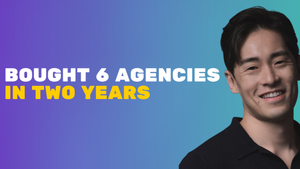For companies working on complex technologies, raising awareness and education in their field is key. If potential users don't understand how a new technology fits into existing workflows, they might be hesitant to adopt it, or simply ignore it. But how do you educate a market without boring potential users with over-complicated facts?
CN Bio, a company developing a user-friendly organ-on-a-chip (OOC) technology, faced this challenge and aimed to change industry perceptions through a smart and original social media campaign. While OOC technology was seen as innovative, CN Bio wanted to position it as an essential, soon-to-be standard method for preclinical toxicology evaluation. The challenge was to get scientists, researchers, and stakeholders to engage in a meaningful conversation that would reinforce the practical relevance of OOC in laboratory workflows.
How did they manage to do it? Through a giveaway campaign inspired by B2C marketing.
Let’s dive in.
Campaign strategy and setup
To create and manage this campaign, CN Bio hired the life sciences marketing agency Viveo to help (if you haven’t read it yet, I already interviewed the founder of Viveo, Marina Hop, on why creative insight matters in science marketing). Viveo designed the campaign, wrote the copy for the ads, recommended the third-party media partners and drafted the Terms and Conditions of the giveaway competition for CN Bio's legal department to review. CN Bio did the landing page, final artwork and managed the day-to-day responses on LinkedIn.
The core of CN Bio’s campaign was a simple but powerful message: Organ-on-a-chip will become integral to preclinical toxicology evaluation. So which other lab essential could you not manage without?
The setup was quite simple too. CN Bio shared the campaign on its LinkedIn account via posts like the one below:

The competition rules and instructions were also clearly explained on a landing page linked to the post:

Scientists and lab professionals were encouraged to share their favorite lab essentials in the comments section of CN Bio’s LinkedIn posts or via their own posts. The goal was to create an organic discussion around the tools and technologies that industry professionals rely on daily, and try to position OOC technology as a must-have in modern toxicology testing.
The campaign incentivized participation by offering a high-value prize: two tickets to the next Society of Toxicology (SOT) conference (which costs from $500 to $1,000 per ticket, depending on when you buy the ticket). In my opinion, offering a reward is absolutely necessary for this kind of campaign, so it was the right decision to do it.
Another smart move was the creation of the #MyLabEssential hashtag to track participation and create a recognizable symbol around the campaign. And it worked, as can be seen from this user-generated post using the hashtag:
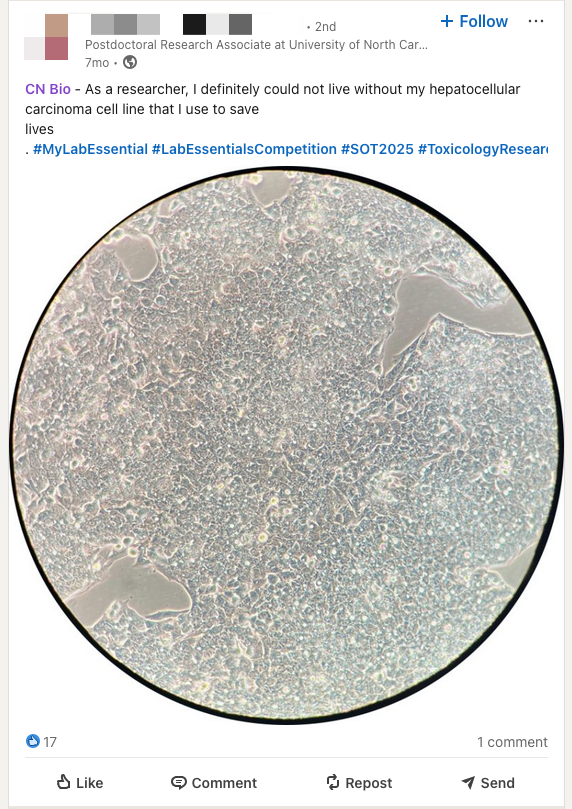
So, overall, the setup wasn't too complicated, but as anyone who's tried to engage LinkedIn users knows, the hardest part isn't the setup, it's the execution.
Promotion and execution
To maximize reach and engagement, CN Bio implemented a multi-channel strategy to ensure both organic and paid promotion. Again, this is a smart strategy, as organic-only campaigns tend to fall flat in the B2B space. So adding a paid budget to boost the campaign is definitely a must in this type of setup.
The campaign was promoted through CN Bio’s LinkedIn channel and amplified through paid promotions on LinkedIn. CN Bio also partnered with two publications, GEN and The Scientist, to promote the competition to their readers (The Scientist also shared it on Facebook with quite good results, more on that below). These partnerships helped CN Bio reach audiences beyond its immediate network, engaging a broader spectrum of scientists and decision-makers in the industry.
CN Bio kindly agreed to share the cost of their campaign, so here is the recap:
- LinkedIn: $1,960
- GEN $3,750
- The Scientist: $4,250
Total spend on paid promotion: $9,960
But beyond this budget, CN Bio’s team was actively tweaking the posts and planned a workflow to reactivate participants’ input and amplify the virality of the campaign:

Here are a few important strategies you should replicate if you launch this kind of campaign:
- Community engagement: CN Bio responded to comments with a thank-you or positive remark to encourage interaction. This is also an excellent way to please the LinkedIn algorithm and increase organic reach.
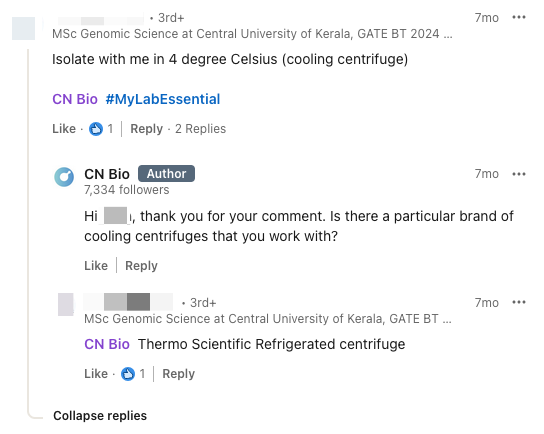
- Strategic tagging: When participants mentioned specific lab products, CN Bio reposted their comments on the LinkedIn pages of those product companies. This is a great way to piggyback on the exposure of larger brands and tap into their followers to increase reach.
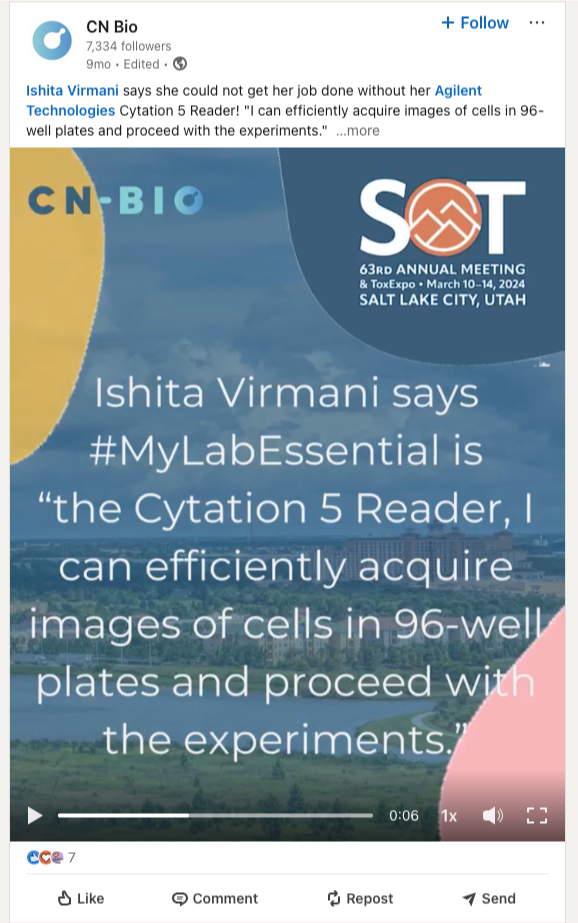
- Continuous optimization: The team continuously monitored engagement and made iterative adjustments, including adding animations to posts, which improved performance. By adapting creative assets and messaging based on real-time performance, CN Bio ensured that the campaign remained effective throughout its run.
I think the execution of the campaign was really good. The combination of organic and paid promotion is definitely the way to go, and instead of just publishing one post and hoping it goes viral, CN Bio made sure to run the campaign over several months, which increases the chances of reaching more people.
Did it pay off? Let's check that out next!
Results of the campaign
The primary goal of this campaign was to build brand awareness. In this type of campaign, the focus isn’t on lead generation but rather on metrics like website traffic and LinkedIn follower growth. That said, CN Bio did report that the campaign resulted in some converted leads—though this was considered a secondary objective.
The campaign delivered strong results on LinkedIn, contributing to a 41% increase in followers:
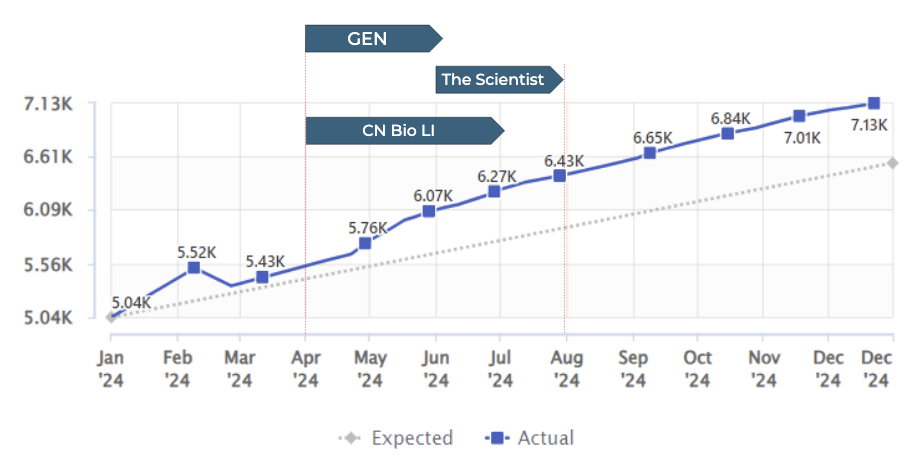
Website traffic also saw a significant boost, with the campaign contributing to a 46% increase compared to the previous year:
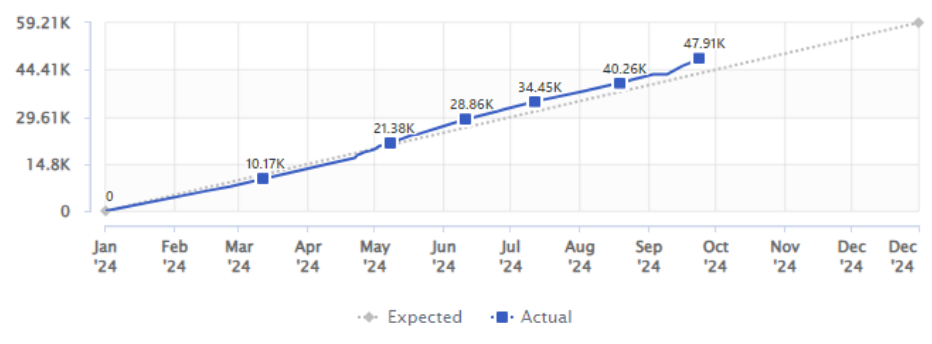
A key factor in the campaign was leveraging third-party media to reach audiences across multiple channels. For example, The Scientist's campaign was heavily focused on Facebook:

However, GEN failed to provide any campaign performance reports despite CN Bio's request. If an advertising partner doesn’t deliver reporting, I’d consider it a no-go for future campaigns.
Overall, these are solid results, especially considering the substantial website traffic increase. Given that the total budget was under $10,000, the level of exposure achieved is quite impressive.
Why do giveaway campaigns work?
Giveaway campaigns have been around forever, so you might be wondering, “Why should I bother?”. The reason they work lies in their ability to tap into some important cognitive biases, such as:
- Social proof: Scientists saw their peers engaging with the campaign, which encouraged more participation. Seeing industry colleagues sharing their favorite lab essentials validated the campaign’s relevance and credibility.
- Gamification: The interactive format of sharing personal lab essentials turned the campaign into a fun, low-effort game with a tangible reward.
- Reciprocity: By engaging with every participant and amplifying their responses, CN Bio built goodwill and increased the likelihood of further brand interaction.
- FOMO (Fear of missing out): The giveaway was only around for a short time, so people jumped on the chance to win.
- Brand affinity by association: By reposting participants’ comments on larger product companies’ pages, CN Bio associated itself with established lab brands, reinforcing credibility. This cross-promotion subtly positioned CN Bio alongside some of the most trusted names in life sciences.
I'm glad to see that life sciences companies are experimenting with this type of campaign, which is typically associated with B2C marketing. I strongly believe in bringing more B2C-style tactics into our industry, as they can often be highly effective. That’s why I jumped at the opportunity to analyze this campaign as soon as I learned about it.
The advantage of seeing more of these campaigns is that we can learn from them collectively and continuously refine our marketing experiments. With that in mind, let’s explore what other science marketers could do to experiment with a giveaway campaign.
How to replicate and enhance this type of campaign?
CN Bio’s campaign is a great baseline for how life sciences companies can use giveaways and interactive content to engage their audience. The fact that they were able to do this with a limited budget and team resources is great proof that with some creativity and effort, science marketers can achieve great results.
But what if you had a much larger marketing budget and more resources? Or what if your target was not limited to individuals in pharma and biotech, as was the case with CN Bio, but rather the entire academic field?
For those with more resources or a broader target, here's how you could follow in CN Bio's footsteps:
- Try non-business-related rewards
In B2B marketing, we often assume that giveaway prizes should stay industry-specific—things like conference tickets, lab equipment discounts, or educational resources. But in my opinion, this limits the potential of the campaign.
Conference tickets, for example, can create a barrier to participation. A conference trip is restrictive—it’s tied to a specific date, location, and topic. Not everyone has the time or budget to attend, even if they win.
If you want to make a giveaway truly exciting and shareable, offer something people genuinely want. Scientists are humans too—they have everyday desires, like the latest iPhone, high-end headphones, or a cool tech gadget, so why not offer them this kind of reward?
- Add UGC content to your campaign
User-generated content (UGC) has taken off in B2C, but B2B is still lagging behind. If you're unfamiliar with the term, UGC involves real users (and/or influencers) showcasing your product, often through video content on social media.
For this kind of campaign, why not encourage your power users to share videos of your technology on LinkedIn to boost the campaign? This would enhance the authenticity of the campaign, as personal posts tend to outperform company posts in reach and engagement. It would also put your equipment at the center of the campaign rather than relying on exposure through third-party lab equipment.
If you have some budget, consider collaborating with an influencer to promote your campaign. More and more scientists have large, targeted audiences on social media, and tapping into their reach can significantly boost a campaign’s visibility and credibility. Why not give it a try?
- Don’t overlook lead generation in giveaway campaigns
I understand that brand awareness was the main goal of this campaign, and that makes sense. But I also believe that a giveaway campaign can balance virality with lead generation—you don’t have to choose just one.
A good way to do it is to require participants to submit their email to participate in the giveaway campaign after they post on social media. You then gain both visibility and potential leads you can nurture with followup emails.
- Manage your own ad budget
Let’s do some quick math on The Scientist’s ad campaign: CN Bio spent $4,250 and got 72 clicks to their landing page. That translates to around $59 per click.
Now, let’s compare that to running your own Facebook ads. Even without being a Facebook ad wizard, you can typically achieve a cost-per-click (CPC) below $3. That means for the same $4,250 budget, you could generate over 1,000 clicks.
Of course, running an ad through The Scientist comes with additional benefits—such as brand association and credibility—but in this type of campaign, clicks are the more valuable outcome as they trigger more participation, more posts being shared, and ultimately, more impact.
- Test another channel
Running this campaign on LinkedIn was an easy choice. Scientists are on the platform, and it’s a safe, business-oriented environment for B2B marketing, where backlash is quite rare. But other places are becoming attractive for interacting with scientists.
For example, I still think Reddit is a totally underrated platform for science marketers. Reddit is a massive community for scientists. Just take the subreddit r/labrats, which is followed by 656,000 people, and they’re all pretty nerdy when it comes to talking about their lab equipment!
Advertising on Reddit has become fairly safe over the past few years, thanks to new controls for advertisers, and you get ads pretty much as soon as you visit a subreddit:
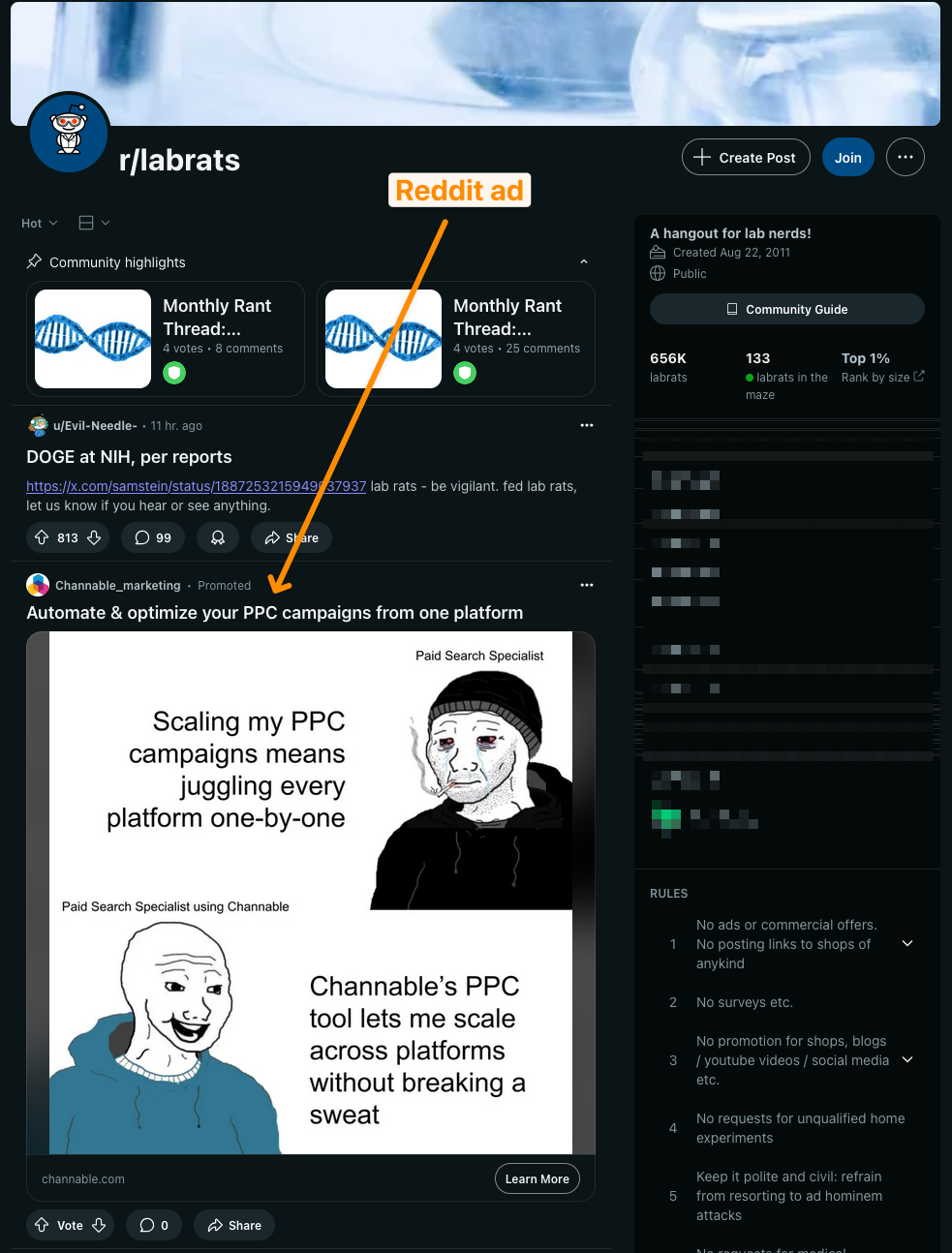
Will running a Reddit-focused campaign be as easy as running one on LinkedIn? Probably not, but damn, I really hope some science marketers give it a try, because this could be a really fun campaign to see in action.
Experiment with your own giveaway campaign
Again, I want to salute the efforts of CN Bio and Viveo for launching this campaign. Life sciences companies often play it too safe in marketing, avoiding risks and sticking to traditional tactics. So, seeing creativity and bold experimentation like this is truly refreshing.
Also, the results of the campaign are, in my opinion, very good considering the limited budget spent on it and should be an incentive for CN Bio’s team to dig further into this type of marketing. I also think surrounding yourself with experts like Marina Hop from Viveo is a good idea if you don’t feel confident enough to organize it on your own (here are six more reasons why you should hire an agency for your life sciences marketing).
If you’d like to share your own campaign with the community and help everyone learn from it, feel free to contact me to be showcased in my next case study!
Disclaimer: Thanks to Marina Hop/Viveo and CN Bio for kindly sharing the details of this campaign and allowing me to make them public. The analysis of this campaign was written independently.




